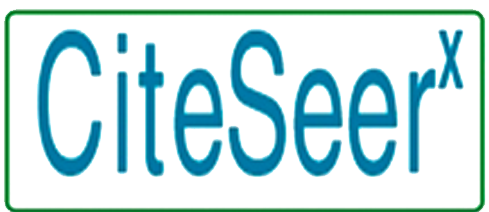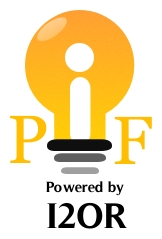DGS Cui-Rods: Reinventing Mathematical Concepts
Abstract
Curriculum materials are instructional materials produced to be used for teaching and learning. Successful teaching requires new materials and innovative approaches. In the present study, I shall present DGS Cui-rods an instructional material for effective teaching and learning of mathematical concepts. I created them in the Geometer’s Sketchpad environment. Dynamic geometry environments allow students to discover and reinvent a wide range of mathematical concepts and their relationships. During problem-solving situations, students are able to construct meanings. They are led to create their personal representations of mathematical concepts and transform them. The design of activities in the learning environment as a part of the instruction thus has a crucial role to play. In the next sections, I shall describe how learning through DGS Cui-Ros affects students’ cognitive structure’s transformations and consequently their cognitive growth.
Downloads
References
Artigue, M. (2000). Instrumentation issues and the integration of computer technologies into secondary mathematics teaching. Proceedings of the Annual Meeting of the GDM. Potsdam, 2000: Retrieved from:http://webdoc.sub.gwdg.de/ebook/e/gdm/2000
Artigue, M. (2002). Learning mathematics in a CAS environment: The genesis of a reflection about instrumentation and the dialectics between technical and conceptual work. International Journal of Computers for Mathematical Learning, 7, 245-274.
Battista, M. (2001). Research-based perspective on teaching school geometry. In J. Brophy (Ed.), Subject-specifi c instructional methods and activities (pp. 73– 101). New York: JAI Press and Elsevier Science.
Baroody, A.J. (1989). Manipulatives don’t come with guarantees. Arithmetic Teacher 37(2), 4–5.
Clements, D. H. (2000).From exercises and tasks to problems and projects. Unique contributions of computers to innovative mathematics education. Journal of Mathematical Behavior. Elsevier Science Inc.19, 9-47
Clements, D. H., & McMillen, S. (1996). Rethinking “concrete” manipulatives. Teaching Children Mathematics, 2(5), 270-279.
Clements, D. H., & Sarama, J. (2007). Effects of a preschool mathematics curriculum: Summative research on the Building Blocks project. Journal for Research in Mathematics Education, 38(2), 136-163.
Cobb, P., & Bauersfeld, H. (Eds.). (1995). The emergence of mathematical meaning: Interaction in classroom cultures. Hillsdale, NJ: Erlbaum.
Dewey, J. (1938/1988). Experience and education. In J. A. Boydston (Ed.), John Dewey: The later works, 1925-1953 (Vol. 13, pp. 1-62). Carbondale, IL: Southern Illinois University Press. (Reprinted from: 1997).
Dienes, Zoltan P. (1960). Building up Mathematics, Hutchinson Educational: London.
Drijvers, P., Godino, J. D., Font, V., & Trouche, L. (2013). One episode, two lenses. Educational Studies in Mathematics, 82(1), 23-49.
Freudenthal, H. (1971) Geometry between the devil and the deep sea. Educational Studiesin Mathematics, 3 (3/4), 413- 435.
Freudenthal, H. (1973) Mathematics as an Educational Task, Reidel, Dordrecht.
Furinghetti, F. & Paola, D.(2003) Revisiting guided reinvention: icons, indexes, and symbols in the construction of mathematical objects http://math.uncc.edu//~sae/dg7/furinghetti.pdf
Fuson, K. C., Carroll, W. M., & Drueck, J. V. (2000). Achievement results for second and third graders using the Standards-based curriculum Everyday Mathematics. Journal for Research in Mathematics Education, 31, 277-295.
Fuys, D., Geddes, D., & Tischler, R. (1988). The Van Hiele model of thinking in geometry among adolescents. Journal for Research in Mathematics Education. Monograph, Vol. 3, pp. 1-196.Published by: National Council of Teachers of MathematicsStable URL: http://www.jstor.org/stable/749957Accessed: 03/11/2013
Glasersfeld, E. v. (1987).Learning as a constructivist activity. In C. Janvier (Ed.),Problems of representation in the teaching and learning of mathematics (pp.3-18). Hillsdale, NJ: Lawrence Erlbaum Associates
Glasersfeld, E. v. (1995). Radical constructivism: A way of knowing and learning. London:Falmer Press
Glasersfeld, E. (1991). Radical Constructivism in Mathematics Education. Kluwer Academic Publishers.
Gravemeijer, K., &Terwel, J. (2000) Hans Freudenthal: a mathematician on didactics and curriculum theory. Journal of Curriculum Studies, 32(6), 777–796
Hayes, R., & Oppenheim, R. (1997). Constructivism: Reality is what you make it. In T. Sexton & B. Griffin (Eds.), Constructivist thinking in counseling practice, research and training (pp. 19-41). New York: Teachers College Press.
Hiebert, J., Carpenter, T. P., Fennema, E., Fuson, K., Human, P., Murray, H., Olivier, A., & Wearne, D. (1996). Problem solving as a basis for reform in curriculum and instruction: The case of mathematics. Educational Researcher, 25(4), 12–21.
Jackiw, N. (1991). The Geometer's Sketchpad [Computer Software].Berkeley, CA: Key Curriculum Press
Jackiw, N., & Sinclair, N. (2009). Sounds and pictures: dynamism and dualism in dynamic geometry. ZDM—The International Journal on Mathematics Education, 41(4), 413–426.
Kant, I. (1965). The Critique of Pure Reason, translated by N. Kemp Smith, Macmillan, London.
Moyer, P. S., Bolyard, J.J., & Spikell, M.A. (2002). What are virtual manipulatives? Teaching Children Mathematics, 8(6), 372-377.
Ng, O. L., & Sinclair, N. (2015). Young children reasoning about symmetry in a dynamic geometry environment. ZDM, 47(3), 421-434.
Novak, J. D. (1990). Concept maps and vee diagrams: Two metacognitive tools for science and mathematics education. Instructional Science, 19, 29-52.
Osborn, Alex (1953). Applied Imagination: Principles and Procedures of Creative Problem Solving. New York, New York: Charles Scribner's Sons.
Olive, J. (1999). From fractions to rational numbers of arithmetic: A reorganization hypothesis. Mathematical Thinking and Learning, 1(4), 279-314.
Olive, J. & Steffe, L. P. (2002). The construction of an iterative fractional scheme: The case of Joe. Journal of Mathematical Behavior, 20, 413-437.
Olive, J., & Makar, K., with V. Hoyos, L. K. Kor, O. Kosheleva, & R. Straesser (2010). Mathematical knowledge and practices resulting from access to digital technologies. In C. Hoyles & J. Lagrange (Eds.), Mathematics education and technology – Rethinking the terrain. The 17th ICMI Study (pp. 133–177). New York: Springer.
Patsiomitou, S. (2012) A Linking Visual Active Representation DHLP for student’s cognitive development. Global Journal of Computer Science and Technology,Vol. 12 Issue 6, March 2012. pp. 53-81. ISSN 9754350. Available at:
http://computerresearch.org/index.php/computer/article/view/479/479
Patsiomitou, S. (2019a). From Vecten’s Theorem to Gamow’s Problem: Building an Empirical Classification Model for Sequential Instructional Problems in Geometry. Journal of Education and Practice. Vol.10, No.5, pp.1-23. DOI: 10.7176/JEP/10-5-01.
Patsiomitou, S. (2019b). A Trajectory for the Teaching and Learning of the Didactics of Mathematics [using ICT]: Linking Visual Active Representations. Monograph. Published by Global Journal Incorporated. United States. (September 5, 2019) . ISBN: 978-1-7340132-0-7. http://doi.org/10.34257/SPatTrajICT
Patsiomitou, S. (2021a). Dynamic Euclidean Geometry: pseudo-Toulmin modeling transformations and instrumental learning trajectories.International Institute for Science, Technology and Education (IISTE): E-Journals. Journal of Education and Practice. ISSN 2222-1735 (Paper) ISSN 2222-288X (Online). 12 (9). pp. 80-96. DOI: 10.7176/JEP/12-9-09. Publication date: March 31st 2021.
Patsiomitou, S. (2021b). A Research Synthesis Using Instrumental Learning Trajectories: Knowing How and Knowing Why.Information and Knowledge Management. ISSN 2224-5758 (Paper) ISSN 2224-896X (Online). 11(3). DOI:10.7176/IKM/11-3-02.
Piaget, J. (1937/1971). The construction of reality in the child (M. Cook, Trans.). New York: Basic Books.
Piaget, J. (1970). Genetic Epistemology, W. W. Norton, New York.
Remillard, J. T. (1999). Curriculum materials in mathematics education reform: A framework for examining teachers' curriculum development. Curriculum Inquiry, 29(3), 315-342.
Remillard, J. T. (2005). Examining key concepts in research on teachers’ use of mathematics curricula. Review of Educational Research, 75(2), 211–246. https://doi.org/10.3102/003465430 75002211
Available on line https://www.scinapse.io/papers/2149311297
Roehler, L., & Cantlon, D. (1997). Scaffolding: A powerful tool in social constructivist classrooms. In K. Hogan & M. Pressley (Eds.), Scaffolding Student Learning: Instructional Approaches and Issues. Cambridge, Massachusetts: Brookline Books.
Rogoff, B., & Wertsch, J. (1984). Children's learning in the “zone of proximal development”. San Francisco: Jossey-Bass.
Ross, C. J. (2004) The effect of mathematical manipulative materials on third grade students’ participation, engagement, and academic performance. Master of Education in K-8 Mathematics and Science. University of Central Florida
Russell, S. J. (1997). The role of curriculum in teacher development. In S. Friel & G. Bright (Eds.), Reflecting on our work: NCTM enhancement of K–6 mathematics (pp. 247–254). New York: University Press of America.
Sinclair, N., & Crespo, S. (2006). Learning mathematics in dynamic computer environments. Teaching Children Mathematics, 12(9), 436-444.
Skemp, R. (1987). The Psychology of Learning Mathematics. Hillsdale, NJ: Erlbaum
Trouche, L. (2004). Managing the complexity of the human/machine interaction in computerized learning environments: guiding students’ command process through instrumental orchestrations. International Journal of Computers for Mathematical Learning 9, pp. 281-307, Kluwer academic publishers
Van de Walle, J., & L.H. Lovin. (2005). Teaching Student-Centered Mathematics: Grades K-3. Allyn & Bacon.
Vérillon, P., & Rabardel, P. (1995). Cognition and artefacts: A contribution to the study ofthough [sic] in relation to instrumented activity. European Journal of Psychology ofEducation, 10, 77–103.
Verschaffel, L., Greer, B., & de Corte, E. (2000). Making sense of word problems. Lisse, Netherlands: Swets and Zeitlinger.
Vygotsky, L.S. (1987) Thinking and speech. In R.W. Rieber and A.S. Carton (Eds.), The collected works of L.S. Vygotsky, Volume 1: Problems of general psychology, (Trans. N.Minick). New York: Plenum.
Vygotsky, L. (1978). Mind in Society: The development of higher psychological processes. Cambridge, MA: Harvard University Press
Vygotsky, L.S. (1934/1962). Thought and language. MIT Press
Wheatley, G. & Reynolds, A. (1996). The construction of abstract units in geometric and numeric settings. Educational Studies in Mathematics, 30(1), 67-83.
Copyright (c) 2022 Stavroula Patsiomitou

This work is licensed under a Creative Commons Attribution-NonCommercial-NoDerivatives 4.0 International License.
Author(s) and co-author(s) jointly and severally represent and warrant that the Article is original with the author(s) and does not infringe any copyright or violate any other right of any third parties, and that the Article has not been published elsewhere. Author(s) agree to the terms that the GPH Journal will have the full right to remove the published article on any misconduct found in the published article.























